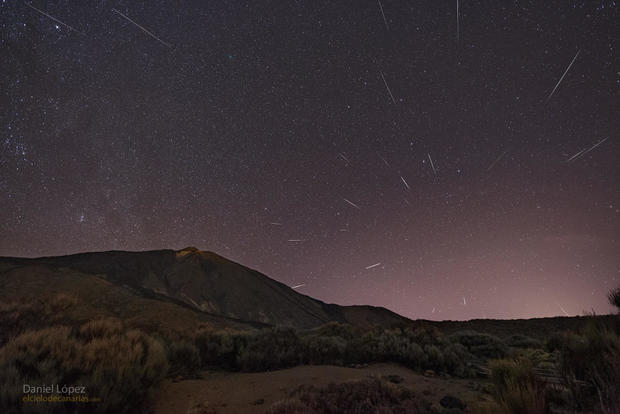
Artist’s illustration of NASA’s Mars Perseverance Rover on the Red Planet’s surface.
Some six weeks away from the “seven minutes of terror” that will precede the entry, descent, and landing of NASA’s most ambitious robotic Mars mission ever attempted, it’s worth a look back at what we learned from NASA’s very first Mars flyby which launched some 56 years ago last month.
NASA’s Mariner 4 spacecraft, launched from Cape Canaveral on November 28, 1964, became the first successful flyby of the red planet, returning the first close up pictures of Mars from space. But what its 21 crude images relayed to an eager team of scientists back on Earth was that Mars was far different than initially imagined. And that it bore little resemblance to the planet which up until the late 19th century had been envisioned as brimming with flowing water, perhaps even canals constructed by an intelligent civilization.
Mariner 4’s amazing flyby, some seven and a half months after launch, instead revealed a planet that was more arid than Arizona and likely incapable of harboring any sort of surface life. The 575 lb. spacecraft took measurements of cosmic dust, solar plasma, trapped radiation, and cosmic rays. But its transcendent claim to fame is that it took and subsequently sent back the first grainy black and white images of another planet from deep space.
This was a feat that would not have been possible without NASA’s nascent deep space network, now a mainstay of all of the space agency’s deep space communications with its planetary probes.

Artist’s concept of Mariner 4 spacecraft.
As for NASA’s Mars Perseverance mission?
After its February 18th landing, NASA says its six-wheel, car-sized rover will begin scouring Mars’ Jezero Crater in an effort both to better understand the area’s geologic history but to also search for traces of ancient microscopic life. During wetter times billions of years ago, Jezero is believed to be the site of an early Martian lake. Thus, Perseverance will devote a lot of its time there collecting and caching Martian dozens of drill core sediments. The rover will seal and deposit the samples in tubes on the surface that will eventually be collected for return to Earth by future missions, says NASA.
As for Mariner 4 and its legacy?
The spacecraft flew past Mars on July 14, 1965, collecting the first close-up photographs of another planet at a minimum distance of some 6200 miles, says NASA. The pictures, played back from a small tape recorder over a long period, showed lunar-type impact craters, some of them touched with frost in the chill Martian evening, the agency notes. In addition to providing key information about how to safely deliver future missions to the Martian surface, says NASA, the spacecraft far outlasted its planned eight-month mission.
The mission’s measurements indicated that the solar wind may have direct interaction with the Martian atmosphere, and that the atmosphere and surface are fully exposed to solar and cosmic radiation. We now know from NASA’s MAVEN spacecraft just how extreme this direct interaction with Mars’ current and ancient atmosphere actually is and was.
This early mission and others in the Mariner program like it proved that interplanetary missions were feasible with the technology of the era and could be developed within a few short years.
In contrast, at the time of the Mariner 4 1965 flyby, we had no clue that Mars’ climate history would be so frustratingly complicated to decode. A frozen desert world that shows signs of past hydrology, there’s a running joke among planetary scientists that almost everyone has ‘discovered liquid water on present-day Mars at least once. But even now, more than a half century after Mariner 4 surprised us; that’s a point that’s actively debated. Does Mars have liquid water on the surface? Or in its subsurface?
We’re still puzzled by gaps in our understanding of Mars’ climate, even as NASA’s Mars MAVEN mission has provided a wealth of extraordinary data showing how dramatically the planet lost its atmosphere and water.
But Mars science’s defining question still remains whether the red planet once harbored some sort of microbial life. And for the truly optimistic, whether Mars might still be hanging onto life deep within its subsurface.
Fifty-six years after Mariner 4’s historic flyby, we can be thankful that 2021 will see missions arriving at Mars from NASA, the United Arab Emirates (UAE), and China. All of which will continue chipping away at Mars’ remaining mysteries.
https://news.google.com/__i/rss/rd/articles/CBMibWh0dHBzOi8vd3d3LmZvcmJlcy5jb20vc2l0ZXMvYnJ1Y2Vkb3JtaW5leS8yMDIxLzEyLzMxL25hc2FzLWZpcnN0LW1hcnMtZmx5Ynktc2V0LXRoZS1zdGFnZS1mb3ItdG9kYXlzLXJvdmVycy_SAXFodHRwczovL3d3dy5mb3JiZXMuY29tL3NpdGVzL2JydWNlZG9ybWluZXkvMjAyMS8xMi8zMS9uYXNhcy1maXJzdC1tYXJzLWZseWJ5LXNldC10aGUtc3RhZ2UtZm9yLXRvZGF5cy1yb3ZlcnMvYW1wLw?oc=5
2021-01-01 01:38:47Z
52781278666826












